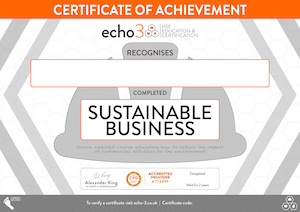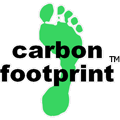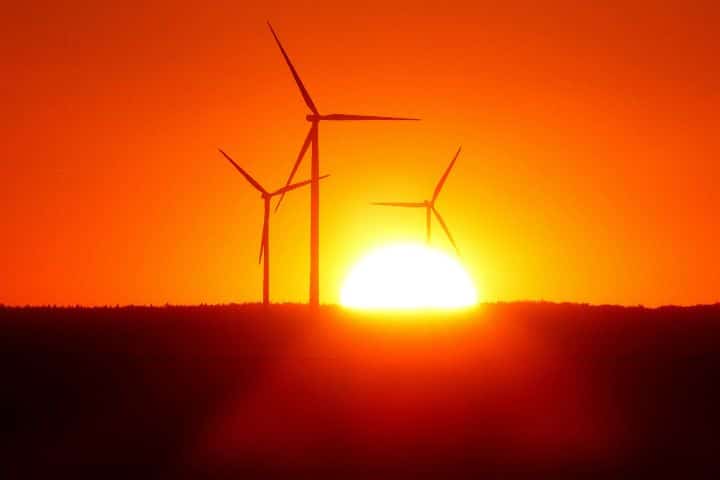ENVIRONMENTAL AWARENESS COURSE
Environmental Awareness course provides and understanding to your colleagues on how they can make positive contributions to the environment. 2024 was the first year the world temperature exceeded 1.5C above pre-industrial levels.
Through a greater awareness of the cumulative impact of their actions your employees will be encouraged to reduce the impact on the environment through their activities.
For example; switching off PCs overnight and using less paper are 2 simple ways your staff can cut costs. Its estimated that leaving PCs on overnight emits carbon dioxide equivalent to 5 million cars. While paper currently uses 6% of global energy consumption in its manufacture.
COURSE OBJECTIVE
Provide staff with the knowledge and motivation to reduce energy consumption and waste in your business, and so saving money and emissions.
LEARNING OUTCOMES
- Understand what sustainability means
- Raise awareness of environmental issues
- What are the legal duties on businesses
- Ways to reduce carbon emissions at work
COURSE CONTENT
UNIT 1 | SUSTAINABILITY
We begin by outlining what sustainability is and how to achieve it.
UNIT 2 | ENVIRONMENTAL ISSUES
Secondly, we highlight the range of issues that are causing problems today and which will grow if we don’t act. For example; greenhouse effect; deforestation; air pollution; smog; acid rain; waste management and water pollution,
UNIT 3 | COMMERCIAL MITIGATION
Thirdly, we highlight how good environmental policies don’t just been using clean energy. Local issues like dust, traffic or noise can be problems too. We then provide examples of environment incidents and their cost.
UNIT 4 | INDIVIDUAL MITIGATION
Finally, we detail your businesses responsibility for the environment. From legal minimums to best practice.
WHO IS THIS COURSE FOR?
All staff. Particularly; Office Managers; Facilities Managers; Those with responsibility for environmental policies or procedures.
CERTIFICATE & ACCREDITATION
At the end of the online Sustainable Business course there is a 15 question, multiple choice quiz. If learners demonstrate their understanding of the course content by achieving a minimum score of 80%, we’ll email them their completion certificate. If learners score less than 80%, they can revisit any part of the course and retake the quiz until they are successful. A posted certificate is available for £9.

COURSE INCLUDES
- Accelerated Learning | 50 Minutes
- Fully accredited training
- Explains and aligns to EU/UK legislation
- Knowledge foundation of environmental issues
- CPD accredited certificate
- Zero carbon product

WHAT IS SUSTAINABLE DEVELOPMENT
Sustainability means meeting current needs without compromising the ability of future generations to meet their own needs.
So, in environmental terms, natural resources must only used at a rate at which they can be replenished. For instance, Air. In other words, for sustainability, carbon cannot be added to the atmosphere quicker that it is removed.
BUSINESS AND CLIMATE CHANGE
Businesses are threatened by climate change some more than others. For example Insurance costs, Carbon Taxes and energy prices are all increasing some imperceptibly but the trend is consistently up. To hold global warming at 2C its estimated 15% of global Stockmarket value will need to be spent. For example a 2018 study found starting now electricity suppliers must retire 1/5 of all non-clean capacity and cancel all new non-clean projects.
But as demand shifts there are opportunities too. For example the market for clean recyclable products will increase. To help you capitalise on these opportunities this environmental awareness training course will help your staff understand the issues and therefore help increase the chance of innovation and improve decision making.
ENVIRONMENTAL POLICIES
Creating businesses that maintain the natural balance of our environment is an ever more pressing need. As awareness grows, public opinion shifts. As a result, businesses who cannot demonstrate responsible environmental procedures will suffer.
On the 12th December 2015 195 nations signed the Paris Agreement with the goal of keeping keeping global warming below 2 degrees celsius. Each nation must make plans to mitigate global warming. For example the UK and France have already said they will ban the sale of petrol and diesel cars by 2040 as part of the agreement.
By providing a knowledge foundation this online Environmental Awareness course can help SMEs and large business alike move in the right direction.
CARBON DIOXIDE NUMBERS
Carbon dioxide is a greenhouse gas release from the burning of fossil fuels that traps heat in the atmosphere. Since the industrial revolution began humans have released an estimated 750 billon tonnes of carbon dioxide into the atmosphere.
Globally, each day, we burn 96 million barrels of oil & gas. Thats 1.5 barrels for each person in the UK. Consequently, 40 billon tonnes of carbon dioxide is added to our atmosphere each year. But, our atmosphere weights around 5,750 quadrillion tonnes. Therefore, the extra carbon dioxide, each year, only comprises 0.00000696% of our total atmosphere which doesn’t seem like a lot. Rounded up the additional carbon, added to the atmosphere each year, is 7 parts per million (or ppm).
BUT consider how sensitive the atmosphere is. Around 170ppm of carbon and earth’s and in an ice age. 300ppm and we are at the highest known in history. In this period Antarctica had forests and Greenland’s hills were green. In the last 50 years we’ve shot-up to over 400ppm of atmospheric carbon. A rate of increase over 100 times faster than at any other point.
So, at the current rate earth’s atmosphere will comprise 540ppm of carbon dioxide by 2040. That is not far off twice the highest ever recorded prior to human activity.

Just like switching on a gas hob to boil a kettle. It’ll take time before we know the temperature this carbon will raise the atmosphere to. Anything we can do now to reduce atmospheric carbon will help reduce temperature growth. Much like turning down the hob.
WHAT ARE FEEDBACK LOOPS
Human activity has released around 750 billion tonnes of carbon dioxide into earths atmosphere. As a result global temperatures have risen 0.6 Cs and this temperature rise leads to further temperature rises irrespective of human activity. This is what the term feedback loop refers to and why it is so hard to model cause and effect.
There are dozens of powerful feedback loops acting all the time. For example; warmer conditions are causing more Amazon fires. Melt water on top of ice caps is less reflective than snow. Therefore more heat is absorbed and melting is accelerated.
Potentially the most serious feedback loop involves Artic soil and permafrost. In the UK our garden soil contains 5% carbon. Artic soil is contains around 20 to 50% of carbon. The Artic holds 1,200 billion to 1,500 billion tonnes of carbon.
- 10 x more carbon than is locked in the Amazon.
- 2 x more carbon than humans have realised into the atmosphere in 150 years.
As the artic warms, like turning up a fridge, permafrost melts and bacteria become more active releasing potentially huge amounts of carbon (and methane).
The self-perpetuating nature of global warming means scientist don’t know when rising temperatures will end.






